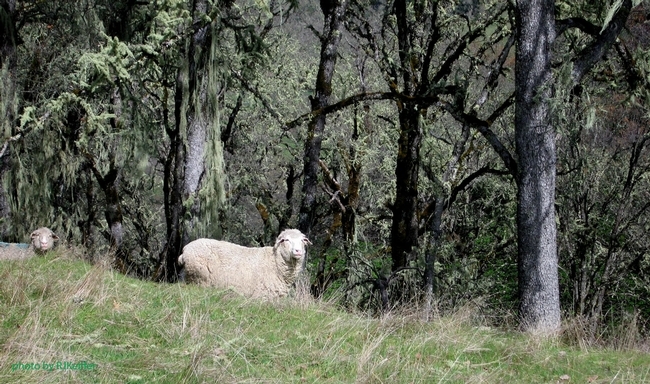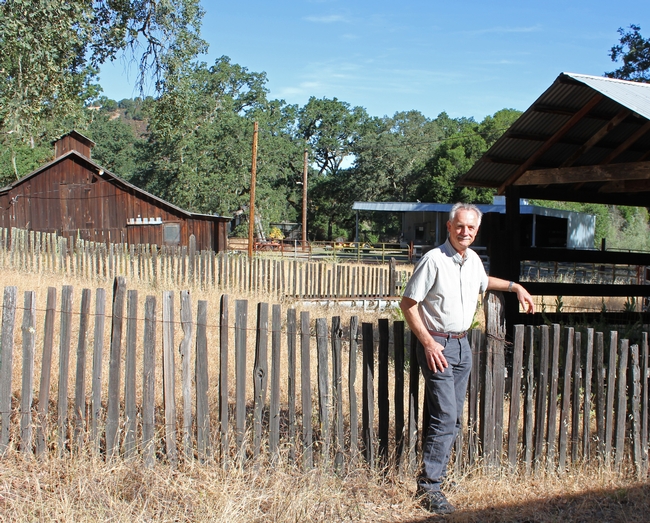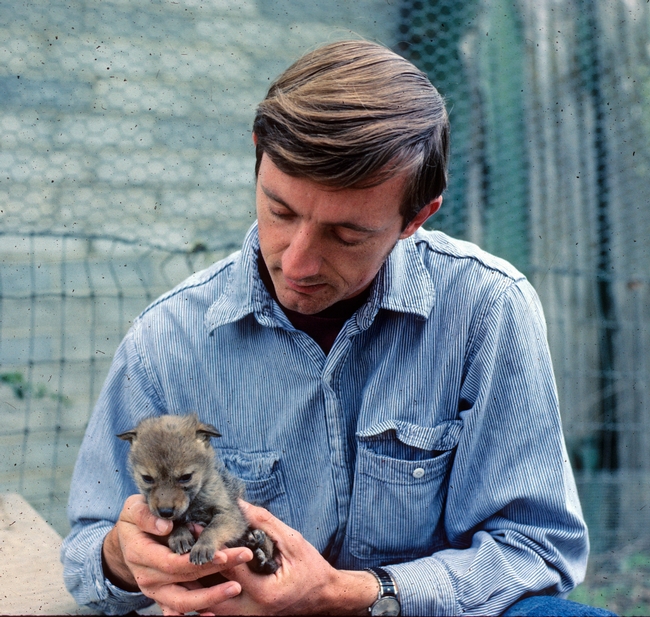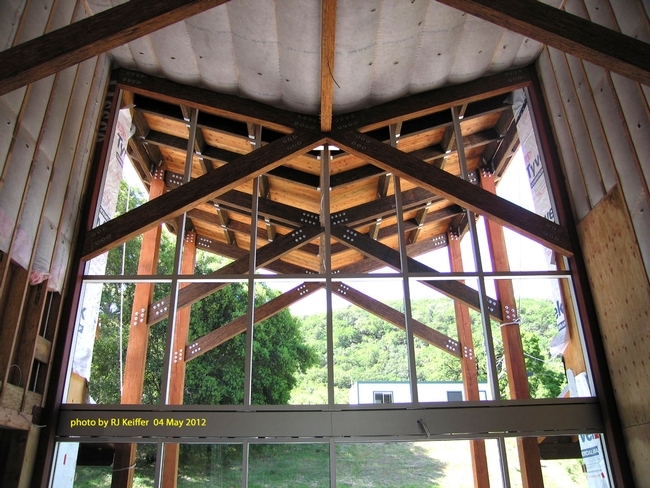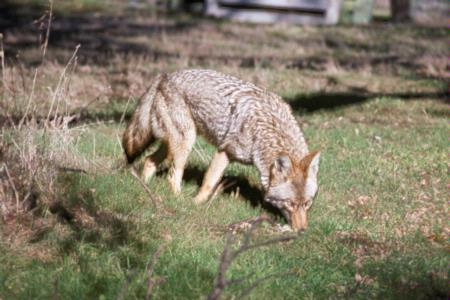Posts Tagged: Robert Timm
Research can help Californians live safely with wildlife
Winter is typically lambing season on Northern California sheep ranches - a perilous time of year. Baby lambs are vulnerable prey for wildlife like coyotes, mountain lions and bears. With increasing numbers of wildlife, both rural and urban neighborhoods are being impacted.
At the UC Hopland Research and Extension Center, we are braced for our first winter under a new policy that minimizes the use of lethal control against native wildlife that prey on our lambs and ewes. As director of the 5,300-acre Mendocino County research facility, I'm nervous for the well-being of our 500 sheep and lambs soon to be born.
The animals are defenseless, therefore it is our responsibility to protect them from predation by wildlife or other animals, such as domestic dogs. Many non-lethal methods of protecting the sheep have been implemented over the past several months. We installed and repaired fences and brought in five new guard dogs to protect the sheep.
Our new practices seemed to work last spring and summer. We can't draw research conclusions from one year of data, but the number of sheep confirmed killed by wild carnivores in 2015 was much smaller than the year before, 10 vs. 48. And the number of coyotes taken so far in 2014 – 15 – was about half the amount in 2014.
I'm encouraged by the numbers. But we want to do better. As a University of California research center, Hopland is the ideal place to study ways for sheep ranchers throughout Northern California to maintain sustainable flocks even in the presence of the growing, and increasingly diverse, wildlife population. At Hopland, we are interested in learning more about how to prevent conflicts with wild animals and reduce the need for lethal control of wildlife. This information will inform policies for wildlife control in cities, rural areas and on ranches.
The Hopland REC was a working sheep ranch when it was purchased by the UC Division of Agriculture and Natural Resources for rangeland and animal management research in 1951. From the 1990s to the 2000s, 10 to 15 percent of lambs or more were killed each year by predators – mainly coyotes – despite aggressive non-lethal and legal lethal control, according to Bob Timm, a UC Cooperative Extension specialist who served as director of the station for 30 years before retiring in 2014.
We will always have predators threatening our sheep. We need research-based information to inform us how to deal with them humanely while maintaining economically viable ranching operations in Mendocino County and throughout California.
Justin Brashares, a professor of wildlife ecology at UC Berkeley, has developed a research plan for the center. We are seeking funding and, in the coming years, will use Hopland as a living laboratory to answer many questions scientists and ranchers have about wildlife in Northern California. The research will help us estimate the wildlife population. We plan to use high-technology GPS collars on prey and predator species to develop very fine-scale information about their interactions. Hopland will also be a site to study the very fencing we and other sheep producers are earnestly installing to protect our sheep from hungry carnivores.
I believe we are lucky to have the wildlife among us. I'm committed to helping our community protect wildlife and raise sheep with research and education programs at Hopland.
We will always have predators threatening our sheep. We need research-based information to inform us how to deal with them humanely while maintaining economically viable ranching operations in Mendocino County and throughout California.
UCCE wildlife specialist Robert Timm retires after 27 years
Robert Timm, director of UC Hopland Research & Extension Center and UC Cooperative Extension wildlife specialist, retired July 1, wrapping up a 27-year career with the University of California.
Timm's career has focused on managing wildlife damage and providing science-based advice for people to solve conflicts between humans and wildlife, which increasingly arise as both human and wildlife populations expand. One of his research subjects was finding better ways to prevent coyotes from preying on sheep.
He compiled, edited and published the reference book “Prevention and Control of Wildlife Damage” in 1983 and co-edited the 2004 revision. Since 1989, he has served in many leadership roles on the Vertebrate Pest Council, including managing editor of the Vertebrate Pest Conference Proceedings since 2002.
In 2007, Timm planned the first Urban Coyote Symposium and published papers from the symposium as a management guide. He also created the website CoyoteBytes.org to provide current, science-based management recommendations to wildlife managers and decisionmakers at the city, county and state levels who were dealing with urban coyote conflicts.
As director of the Hopland Research & Extension Center, he was instrumental in the design and construction of Rod Shippey Hall, an outreach and research facility that was completed in 2012. The late Rod Shippey was a UCCE advisor in Mendocino County.
"What I've loved about being at Hopland is the opportunity to get to know a variety of people who have conducted field research, including campus-based faculty, students and CE advisors," said Timm. "These colleagues and friends are wonderfully diverse in their backgrounds, fields of study, interests and knowledge. It's an ideal situation for interdisciplinary brainstorming, sharing of techniques, and creating new approaches to answer important questions about the management of our resources. At this center, there are always interesting things happening."
Timm earned a B.S. in biology at the University of Redlands and master's and Ph.D. in ecology at UC Davis. He began his career at the University of Nebraska at Lincoln, where he served for nine years as Cooperative Extension vertebrate pest specialist and assistant professor. In 1987, he returned to California to become the second administrator in the history of the “Hopland Field Station,” as it was then known. The late Al Murphy served as the center's first administrator from 1951 to 1986.
In retirement, Timm and his wife Janice plan to stay in Ukiah and spend more time gardening, fishing, traveling and attending Giants games. Timm, who has been granted emeritus status, also plans to finish several publications and continue participating in the Vertebrate Pest Council.
'Green' educational center construction well underway
Construction on the Shippey Educational Center at the UC Hopland Research and Extension Center in Ukiah is in full swing, reported Carole Brodsky in the Ukiah Daily Journal.
The lengthy article said ground was broken in October, and the facility is projected to be completed in the fall.
"We've been a research and extension center since 1951, but have been primarily focused on research, without a strong extension component," said Hopland director Robert Timm. "Farm advisors in the extension office handle the bulk of the outreach. We've needed a facility that could handle larger meetings and address educational and outreach components of our extension programs. We'd hold meetings in a crowded warehouse and hope the weather would cooperate. It took several years, but this project finally rose to the top of the list."
The building is named for the late Rod Shippey, a UC Cooperative Extension advisor from 1955 to 1989.
Among the "green" components of the new facility are:
- Rainwater catchment for flush toilets
- Radiant floor heating
- Solar panels for hot water generation
- On-site wastewater treatment
- Passive heating and cooling elements
- 'Woodpecker-friendly' siding
Future plans for the building include:
- Site-built photovoltaics
- A solar thermal system
- Utilization of green furniture and cabinetry
- Outdoor meeting "terraces"
- Food composting stations
- Creation of a wetland pond
Parking will be near, but not next to the building, the article said. Attendees will traverse a gentle trail to the facility, emphasizing the connectedness to the land and creating an organic transition from car to countryside.
Questions about coyotes or bees? UC experts respond
The Napa Valley Register took a closer look at coyotes in western Napa County subdivisions, after neighbors started spotting the canines near their homes.
Reporter Peter Jensen talked to Robert Timm, director of the UC Hopland Research and Extension Center, which is located in Mendocino County. Timm said that researchers track reports of coyote attacks on humans, though no such attacks have ever been reported in Napa County.
For some Sacramento area trees, it's already spring
The Sacramento Bee reported that Bradford pear trees along Sacramento streets are blooming, and sidewalks were littered with flower petals after Monday's storm.
Reporter Debbie Arrington talked to Eric Mussen, UC Cooperative Extension apiculturist with the UC Davis Entomology department, about how the early warm weather might affect pollination and fruit formation.
"Honeybees don't really get confused," Mussen said. "They do act predictably. Anytime the temperature gets above 55 degrees, if there's food somewhere, they'll go get it."
Though petals may fall, Mussen explained that bees will be able to pollinate trees unless storm winds and rain knock entire flowers to the ground, leaving nothing to pollinate.


